This post was edited and updated in October 2022.
Having a strong core could literally make the difference between being injured and being a healthy runner. For me, keeping up with my core strength has been the single most important thing I’ve done for my running. Since starting core work, I’ve been more efficient as a runner because I’m stronger and more efficient, largely in part to how strong my core is.
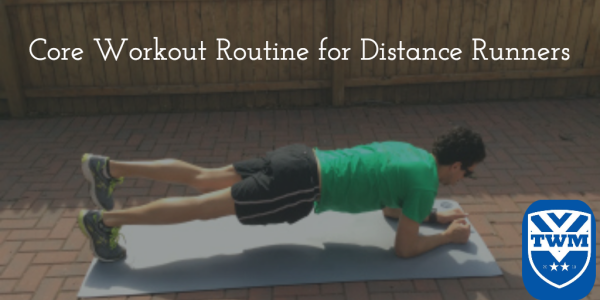
Why I Started Core Strength
I started doing core in college and every week I found myself getting stronger and able to run more mileage. These exercises helped strengthen my abs, back, hamstrings, glutes, and everything in between! In high school, I was a runner who could only handle 30-40 miles per week. Once moving to college, I was asked to run 50-70 miles per week, every single week. Undoubtedly, having a strong core was a huge contributing factor to the success I had in college.
One of the reasons why I love doing core so much is because it helps with my balance and being stable. I am able to do single leg (or single side) exercises with little to no problem because of the years and years of practice doing core. Continuing to do this core routine has translated very well to how I run. As a scrawny high school runner, this is exactly what I lacked, and adding core into my routine greatly improved my ability to withstand the extra running I needed to do to be successful in college and beyond.
Why Core Strength Is Good For You
Core strength is really good for you, as a runner, because running is a series of single-leg motions, repeated over and over again. When you are running, being stable and having a strong core keeps you upright. A strong core creates power and leads to efficiency.
Benefits of Core Work
The bad news is that you are not going to get six-pack abs. The good news is that you’ll be able to sustain your pace for longer without getting tired and breaking your running form. Because you are efficient and your core is strong, your body isn’t breaking down and you’re not wasting energy with inefficient motion.
How Often I Do Core
Since I’ve been doing core for more than 18 years at this point, I don’t need to do every drill every week. In a two-week period, I’ll hit every exercise.
For those just starting out with a core routine, I would aim to run through the routine once or twice per week, keeping the amount of time you spend on each rep short. As you get stronger, you can add time to each different exercise you do. Once you become proficient at each exercise, you can then add modifications to make it more difficult.
If you tend to be on the weaker side, keep the time you spend working really short. It is better to do shorter reps with good form, rather than longer reps with bad form.
The 5 Exercises I Do
The first thing you should know about these exercises is that they should be done slowly. There is no benefit to doing these exercises fast as you’ll find much more progress and success the slower you go through the motions.
The 5 different exercises I do are listed below:
Step Downs
Front Plank
Bridge
Side Plank (both sides)
Bird Dog
Modifications and Variations
Once you become really strong and proficient at doing the core routine, then you can start adding variations to make the exercise multi-planar (moving in multiple planes).
For example, when you’re doing planks, you can add twists or rocking motions to engage your core even more.
Free Resource
If you’re looking for a pdf with the drills and exercises, you can fill out the form and I’ll send you a copy. You’ll be added to my weekly running newsletter where you’ll get additional tips on how to improve your running.
Step Downs
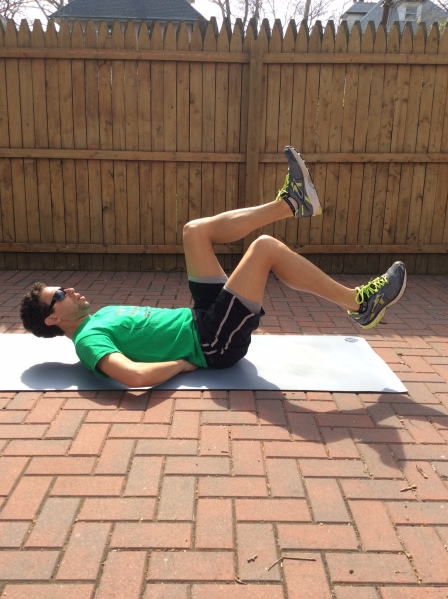
Elbows up, head/neck flexed. Focus on 90-degree angles with your knees and your ankles.
(A) Lie on your back with both hands under your lower back.
Lift your legs so your thighs are at a 90-degree angle with the floor, and bend both knees to a 90-degree angle.
(B) Tighten your lower back so that it doesn’t move up or down, and slowly lower your right foot to within 1 inch of the floor. Keep your right knee bent at a 90-degree angle, and maintain the position of your left leg. Hold your right foot 1 inch off the floor for 2 seconds, then return it to the start position next to the left leg. Repeat the same action, but this time lower the left foot.
*Coach Marc usually does reps of 6 or 7 per leg, lasting 6 seconds before switching. Remember, head up, elbows up, and keep knees at 90 degrees, only rotating from the hip. Feet are dorsiflexed.
Prone Stabilizer

Think plank. Then, raise one foot 3-4 inches off the ground. Repeat with the other foot.
(A) Start on your stomach, and raise yourself into a modified pushup position, with all your weight balanced on your forearms and toes. Keep your back as straight as possible.
(B) Slowly raise your left leg until it lines up with your back. Hold this position for 4 seconds, then lower the left leg, and repeat for 4 seconds with the right leg.
*Coach Marc does reps of 6 or 7 per leg, lasting 6 seconds before switching.
Bridge
(A) Lie on your back with your arms beyond your head, and your feet planted on the floor directly below the knees. Press down on your feet, and lift your torso and upper legs until they form a straight line.
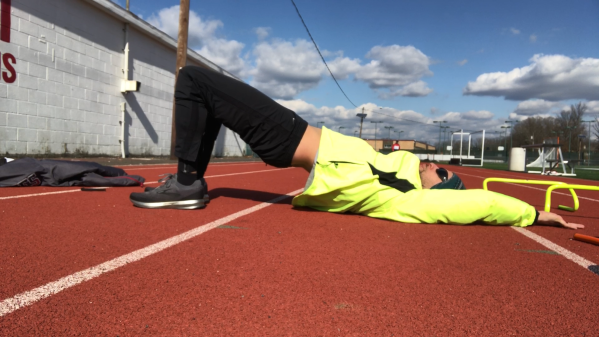
Feet flat on the ground; raise your hips.
(B) With your weight on your shoulders and your feet, slowly extend the right leg by straightening the knee. Be sure to keep your back straight. Hold for 6 seconds, then repeat with the left leg. Repeat both sequences three to five times.
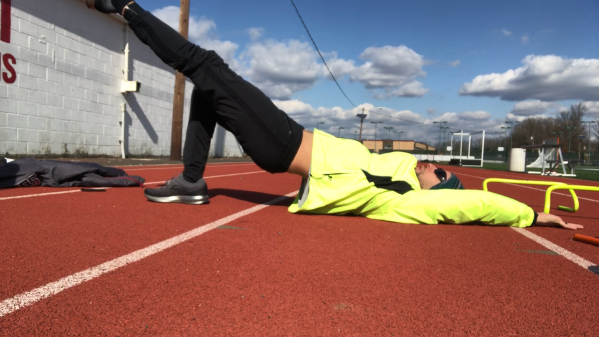
Lift one leg, keeping quads on the same plane. Keep hips raised.
*Remember: Your quads should be on the same plane when in the up position. Always lift your hips when you switch legs!
Side Stabilizer
Lie on your right side with your right elbow under your shoulder, and your left foot resting on your right foot. Press down with your forearm and foot until you lift your body off the ground. Keep your body as straight as possible; don’t allow your hips to sag. Hold this position in a controlled fashion for 30 seconds. Repeat on your left side.
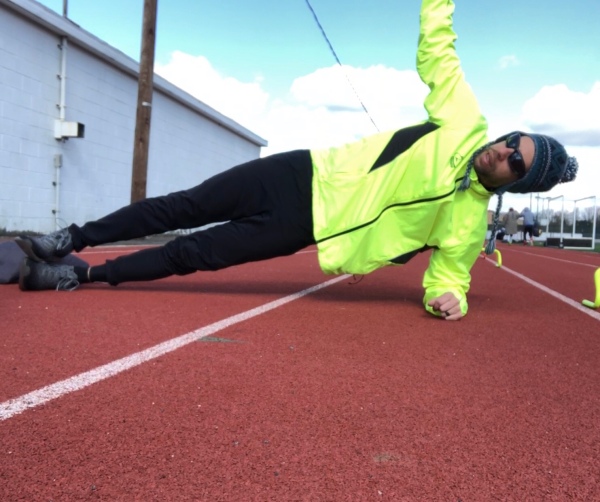
Side plank: keep ankles, knees, hips and shoulders stacked
*When you get strong enough, you can lift your leg (see picture below). Remember though, form counts. Even when you are in the up position, you should be in a straight line.

Advanced: raise leg into star position
Bird Dog
(A) Start on your hands and knees.
(B) Maintaining the 90-degree angle of your left knee, lift your left leg until the thigh is parallel to your upper body. Hold for 4 seconds, then lower. Put the opposite hand out so you end up with one hand and the opposite knee on the ground. *Think about having the bottom of your foot square with your body
and flat (or parallel with the ceiling).
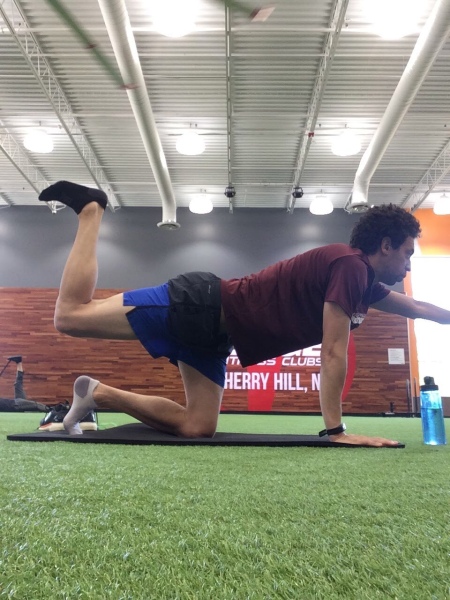
Hands and knees stacked. Raise leg to be parallel with the the ground. Then, point the opposite hand parallel with the ground.
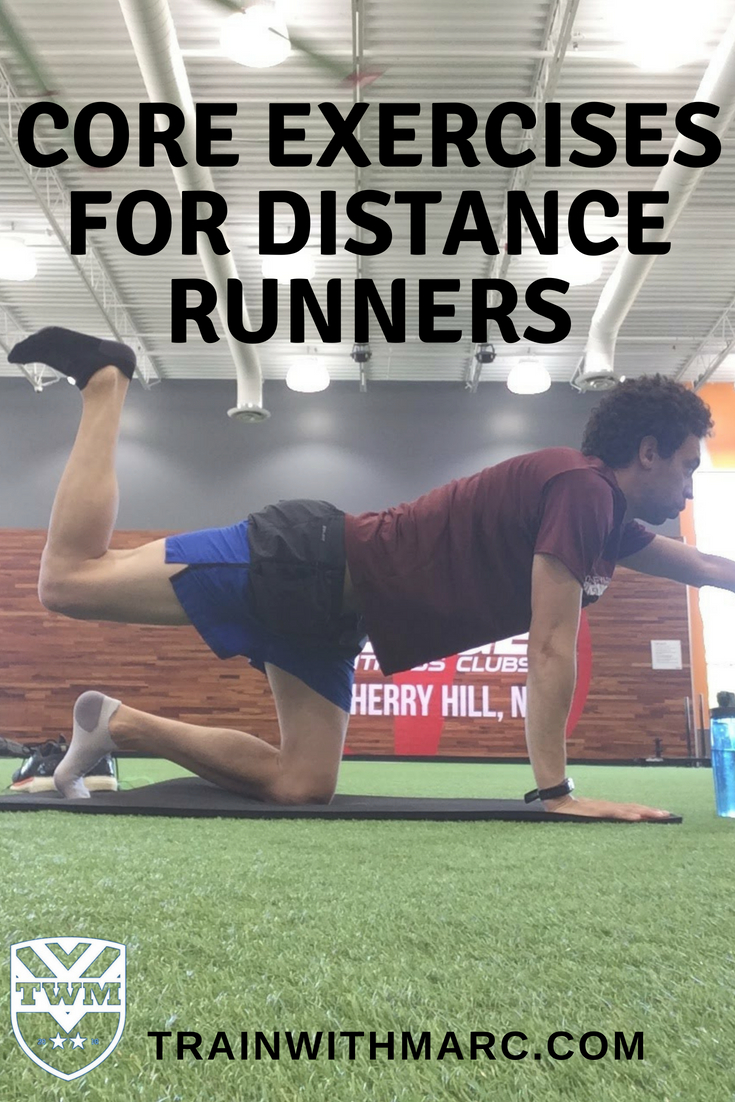
Summary
I was introduced to this core routine in college and I’ve been doing it weekly ever since. It has saved me and made me a much stronger, more resilient runner.
The 5 exercises that I do in this particular routine are:
- Step downs
- Planks
- Bridge
- Side planks (left and right)
- Bird Dog
Each of these should be done slowly and methodically. There is no rush to get these done. Start with 20-30 seconds per exercise and as you get stronger, add more time.
Thanks for reading until the end! Ready for more?
Want my weekly running newsletter?
- As a distance runner, we can't ALWAYS be in LSD mode
- Anyone have plans this Sunday? How 'bout an easy 10?
- What I learned and so you can use with your own training
Ready to Shop Small & Local?
Check out TrainwithMarc’s online store and get ready for your new training cycle!
Looking for running resources?
Find me on social media!
Searching for a running coach? TrainwithMarc has flexible schedules, dynamic plans, and access to a coach who’s worked with every type of runner.
TrainwithMarc will design a training plan based on your needs, running history, and your goals.
Gear I Love

My Favorite RUNNING gear from Amazon ⬇️
Feetures socks: https://amzn.to/36gNRjU
Tifosi Sunglasses: https://amzn.to/349OuJx
Garmin 235: https://amzn.to/2YgXJ9M
Garmin heart rate monitor: https://amzn.to/2JUun8a

Current Running Shoes ⬇️
Brooks Levitate: https://amzn.to/2GazmUh
Brooks Revel: https://amzn.to/3ndnwcO
Nike Pegasus: https://amzn.to/36htGlX

Running Recovery Gear I use daily from Amazon ⬇️
Sonic X Percussion Massage Gun: https://amzn.to/2S87qTt
Foam Roller: https://amzn.to/2MzrAly
CEP Compression socks: https://amzn.to/30gZLGY

TrainwithMarc’s Social Media links ⬇️
Website: trainwithmarc.com
Instagram: @TrainwithMarc_LLC
Twitter: @marcpelerin
Facebook: @TrainWithMarc
TikTok: @Run_Coach_Marc
Venmo: @marcpelerin

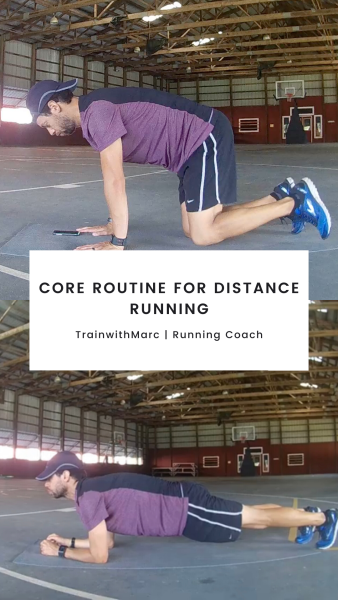
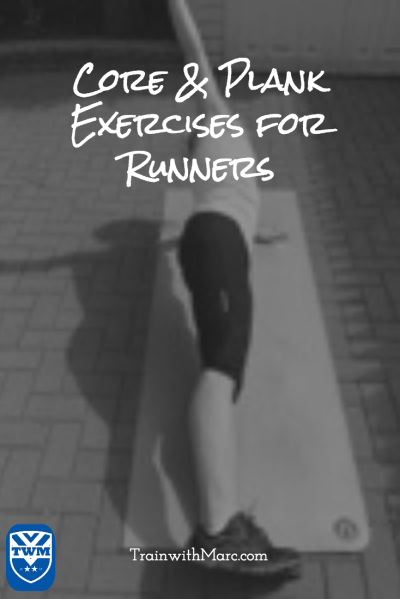














18 thoughts on “Core Exercises for Distance Runners”